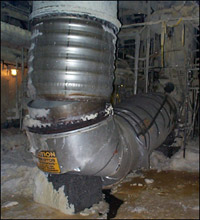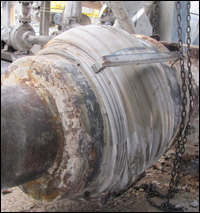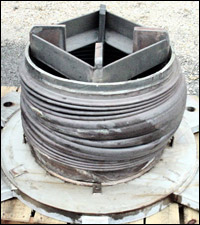Typical Causes of Expansion Joint Failure
Understanding and Preventing Metallic Expansion Joint Failure
Metallic expansion joints, are integral components in piping infrastructure and are designed to absorb movement and vibration. They can fail if not handled, installed, and maintained correctly.
The Expansion Joint Manufacturing Association (EJMA) recommends regular inspections of expansion joints as part of a proactive maintenance program for best performance and a longer lifespan.
No matter how well-built they are, though, time will eventually catch up with them. Eventually, your expansion joints, custom-built for your piping system, will fail.
If not addressed, this expansion joint failure will escalate, damaging surrounding equipment and necessitating a shutdown that can result in significant financial and manpower costs for your company. As such, the first step in protecting your expansion joints is to be aware of how they can fail.
Failures can happen for many reasons. However, experience shows that some causes of failure fit into clear categories.
Common Expansion Joint Failures
This list shows some common causes of failure:
-
Shipping and handling damage. Examples: Denting or gouging of bellows from being struck by hard objects (tools, chain falls, forklifts, adjacent structures, etc.); improper stacking for shipping or storage; insufficient protection from weather or other adverse environmental conditions.
-
Improper installation and insufficient protection
-
During and after installation
-
Examples: Joints with internal liners installed in the reverse direction with respect to flow; installing a pipe expansion joint in a location other than as prescribed by the installation drawings; premature removal of shipping devices; springing of bellows to make up for piping misalignment; insufficient protection from mechanical damage due to work in the surrounding area; insufficient protection of bellows during nearby welding operations and failure to remove shipping devices before placing system in operation.
-
-
Improper anchoring, guiding and supporting of the system
-
Anchor failure in service
-
Bellows corrosion, both internal and external
-
System over-pressure (in-service or hydro test) and bellows vibration (mechanical or flow induced resulting in high cycle fatigue)
-
Excessive bellows deflection (axial, lateral, angular deflections greater than design values)
-
Torsion
-
Bellows erosion
-
Packing of particulate matter in the bellows convolutions which inhibits proper movement of the bellows.
Expansion joint failures are not just a concern for users, but manufacturers as well. US Bellows’ job does not end once we ship a joint; it continues long after as we provide support and assistance to prevent failures such as these.
Knowing how to identify failures in expansion joints in the first step to fixing it. By working with us, you can learn the right solutions and prevent issues before they cause a complete stop in your piping system.
Need help knowing when to replace your expansion joints? Download our Expansion Joint Checklist or FAQ for more information.



Click on a section link below:
- General Installation
- Post-Installation Inspection
- Inspection During and Immediately After System Pressure Tests
- Periodic In-Service Inspection
- Typical Causes of Failure
- Installation Misalignment
- System Operations
- Squirm or Instability
- Installation Instructions (Summary)
Did you know that US Bellows is a Piping Technology Company?
We are proud to be a one-stop solution from expansion joints to pipe supports and engineering services. We work hard to simplify your supply chain, and ensure system reliability with quality assurance.


